The week at a glance
- White-crowned Sparrow still in Norfolk
- Sooty or Bridled Tern in Ayrshire
- Killdeer again on Shetland
- Wilson's Snipe still on Scilly
- American Buff-bellied Pipit still in County Cork
- Barrow's Goldeneye still in County Down
- Probable Pacific Diver again in Cornwall
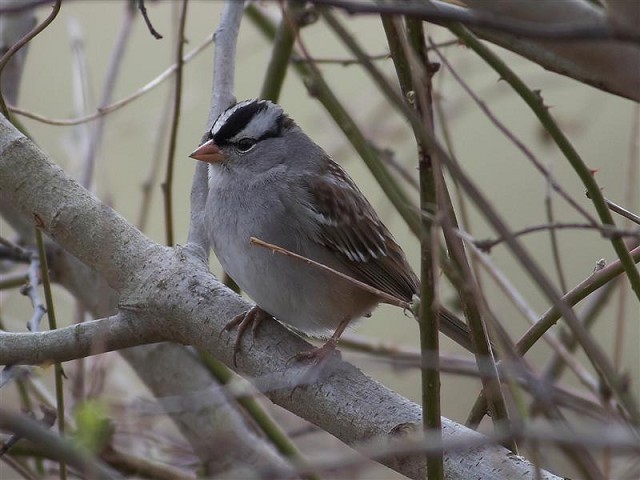
White-crowned Sparrow, Cley next the Sea, Norfolk (Photo: Mark Skipper)
Despite the pretty unpleasant weather that swept across much of the country during the course of the week, the gale-force winds and heavy rain did little to liven up the rarity headlines as spring tries to edge ever closer. At Cley (Norfolk), the adult male White-crowned Sparrow was still to be found in the scrub it has called home for several weeks now, although, for the first time during its stay, the bird was being reported perhaps just once or twice a day for much of the week. This may be a reflection on the fact that the bird has become less and less dependent on the seed being left out for it and has, therefore, been more sporadic in his appearances. Either that or birders aren't looking for it as much now, bearing in mind that we are two months, and more, into this remarkable bird's stay. Or, the final option - the stay has ended for good. With no sign of the bird on the afternoon of 11th, and no sign on 12th, the show really does appear to be over. Time will tell of course, but if it is the end, the most remarkable twitch in British birding will have benefited so many, birders and villagers alike, and the total raised by generous birders donating to the St. Margaret's Church restoration fund reached the incredible sum of £6,300.
In Ayrshire, a Sooty or Bridled Tern flew north past the harbour at Troon on 12th, a remarkable record considering the time of year, whichever species was involved. March 12th is comfortably the earliest date for either species in British waters and the two big questions are will it appear elsewhere in the next week or so and what species was it? The fresh wing of a Bridled Tern found on Lundy (Devon) in 1977 was an April discovery, and represents the earliest date for either species in "modern times" in British waters. And there was a Bridled Tern seen in The Minches off the Outer Hebrides in the early summer of 2006. For the fortunate (or unfortunate) observers of the Troon tern, it seems likely to be a mystery that may not be unravelled.
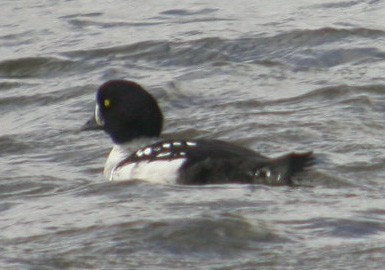
Barrow's Goldeneye, Quoile Pondage, Down (Photo: Derek Charles)
After just over five months away from the headlines, the Killdeer was again at the Pool of Virkie, Mainland (Shetland) on 6th-7th. It really is anyone's guess as to where the bird has been for the winter and it will now be fascinating to see if the bird decides to make the southern tip of Shetland its home for another summer or if it was just passing through this time. At the opposite end of the country, another high-class North American shorebird vagrant, a Wilson's Snipe, was still present on Lower Moors, St, Mary's (Scilly), on 11th. In Ireland, the two quality Nearctic vagrants remained in place for another week. In County Cork, near Youghal, the first-winter American Buff-bellied Pipit was still at Red Barn Strand until at least 8th and the drake Barrow's Goldeneye was still being seen at Quoile Pondage (Co. Down) to 9th. Finally, in Cornwall, another report of a probable adult Pacific Diver was seen off Porthpean on 12th, along with two Black-throated Divers. This tricky-to-pin-down individual was last noted off this site on 20th February.
Balearic Shearwaters were seen from the coasts of both Devon and Dorset this week, including three past Portland Bill (Dorset) on 9th. Others were seen from Berry Head and Beer (both in Devon). The stormy conditions produced seven Pomarine Skuas from four coastal counties, Devon, Kent, Essex and Norfolk. A Little Auk was reported in Carbis Bay (Cornwall) on 12th.

Cattle Egret, Higher Poynton, Cheshire (Photo: Mike Atkinson)
Plenty of Cattle Egrets remained dotted around the country this week and, as ever, it was still Cornwall where the largest concentrations were to be found. The group around the Drift and Sancreed area hit a maximum, on 8th, of 19 this week. Single Cornish birds remained at Stithians Reservoir and at Hay, near Wadebridge, while on the nearby Camel Estuary, 11 birds were seen from the Tregunna hide on 9th. Up to six birds could still be seen in Devon this week. Two birds were still on the Kingsbridge Estuary to 9th, while two more lingered alongside the Exe Estuary, at Powderham, to 7th. Lone birds were noted at Axmouth on 10th and Colyford on 11th. Only one bird reported from Somerset this week, a lingering individual near Muchelney from 7th-11th. In Dorset, five single birds were noted across the county during the week: at Corfe Mullen, East Holme, Abbotsbury, Portesham and Swineham Point. The two birds at St. Leonard's Grange (Hampshire) were still present to 9th, and the single Cattle Egret was still at Harbridge (Hampshire) to 11th at least. The two birds at East Lavant (West Sussex) remained to at least 11th. Singles birds at Higher Poynton (Cheshire) and Pwlldu Bay, Gower (Glamorgan) both remained to 9th at least, and the bird seen near the Severn Estuary, at Frampton (Gloucestershire), last week was still in the area on 7th-8th (dropping in at Slimbridge WWT on the latter date). On 10th, a lone bird was seen, with two Little Egrets, over Wheldrake Ings YWT (North Yorkshire) but didn't stop, while in Lincolnshire a Cattle Egret was seen near Skidbrooke on 11th. In Ireland, a flock of seven birds was found in County Wexford, at Killinick on 6th, and were still present to 9th at least. One was also still around Cork City Lough on 6th and on 9th one was seen near Longhill (Co. Limerick).

Great White Egret, Shapwick Heath NNR, Somerset & Bristol (Photo: Keith Simpson)

Spoonbill, Lodmoor RSPB, Dorset (Photo: Nigel Spencer)

Glossy Ibis, Howden's Pullover, Lincolnshire (Photo: Stef Mcelwee)

Night Heron, Mere Sands Wood LWT, Lancashire (Photo: Ralph Jones)

Great Bustard, Foss Cross, Gloucestershire (Photo: Richard Jackson)
Only five Great White Egrets were reported this week, one of the lower weekly tallies of the winter. Birds remained around the Cotswold Water Park (Wiltshire) to 8th, at Shapwick Heath NNR (Somerset) to 9th and at Pymoor (Cambridgeshire) to 11th. A single bird was at Marshside RSPB (Lancashire) on 10th and another Great White Egret was noted (belatedly) on the River Taw, near Bideford (Devon) on 5th. Spoonbills were noted from five counties across the country this week, Cornwall, Devon, Dorset, Hampshire and Carmarthenshire, with up to 15 birds involved, though the largest group was just four, at Middlebere (Dorset) on 9th. The two wintering Glossy Ibises remained at their regular spots this week - at Howden's Pullover (Lincolnshire), the Spanish-ringed bird was present to 12th, while in Lancashire, the bird at Warton Marsh and Marshside RSPB was present to at least 11th. A few Common Cranes were roaming various parts of the country still this week. Around the edge of the Fens, in Cambridgeshire, one was seen at Farcet on 7th and then near Peterborough on 8th, while at least one was still around Welney WWT and the Hilgay Fen area (Norfolk) from 8th-12th. In Lincolnshire, one was at Huttoft Bank Pit LWT on 7th-8th. In Scotland, two birds flew over Banff (Aberdeenshire) on 6th, while three birds remained near Elgin (Moray) to 10th and, back in Aberdeenshire, one was noted at Loch of Strathbeg RSPB on 11th. At least 10 birds were out on Heigham Holmes (Norfolk) on 11th. A White Stork (of unknown origin) was seen between Ilkley and Otley (West Yorkshire) on 9th and in Lancashire, the suspected (and suspect?) North American Night Heron (the form hoactli) was again at Mere Sands Wood LWT from 9th-12th (after last being noted there on February 15th).
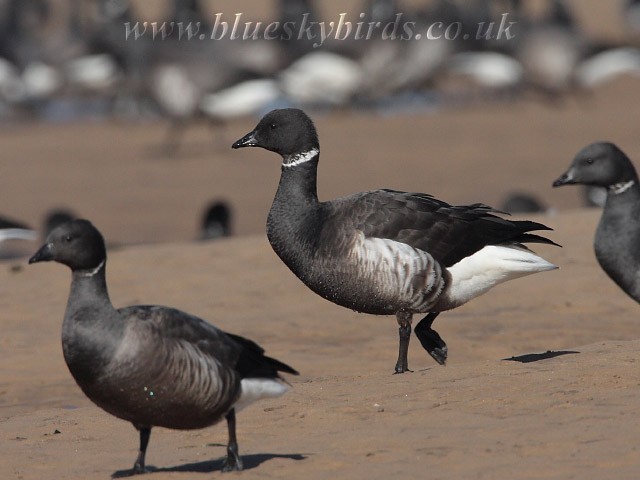
Black Brant, Wells-next-the-Sea, Norfolk (Photo: Peter Simpson)
There were still up to four Ross's Geese at large around Britain this week. In Lancashire, at least one bird was at various sites in the county from 7th-11th, while another was still in Cumbria on 8th-9th. One or two birds also remained in Norfolk, at Holkham Freshmarsh to 10th, with it or another again in east of the county, at Heigham Holmes on 11th. The latter site also boasted a Snow Goose again; also on 11th, amongst fewer than 2,000 Pink-footed Geese. Not a bad strike rate... The first-winter Snow Goose remained at Skinburness (Cumbria) to 6th, while single blue Snow Geese were at Kilconquhar Loch (Fife) on 8th, northwest of Stranraer (Dumfries & Galloway) on 11th-12th and at Longside (Aberdeenshire) on 12th. A "small race" Canada Goose was seen at Kinross (Perth & Kinross) on 6th, with a "Lesser" Canada Goose again at Loch Leven (Perth & Kinross) on the same date. A "Richardson's" Canada Goose was on Islay, at Loch Gorm on 10th, and one or two others were still around Ballintemple (Co. Sligo) early in the week. The adult Red-breasted Goose that has spent the winter on the south coast was in Hampshire, at Sandy Point, on 6th, while on the Solway Firth the adult Red-breasted Goose was in Cumbria (at Skinburness) on 6th and then in Dumfries & Galloway (at Brow Well) on 7th. Once again, there was a fairly poor showing from Black Brants this week, just half a dozen noted. Two or three remained in north Norfolk, and others were noted in Devon, Hampshire, West Sussex and Suffolk.
A drake American Wigeon remained on the Isle of Man this week, still present at Balladoole to 7th. A slight rise in the number of drake Green-winged Teals occurred over the course of the last seven days, with at least 11 birds noted. On Orkney, two birds were seen at separate sites on 9th, one at Finstown and the other still at Loch of Tankerness. One of these, or perhaps even another, was seen at Shapinsay on 12th. Other new birds included individuals at Saltholme Pools (Cleveland) on 6th, at Stanwick GP (Northamptonshire) on 8th-11th and Aberlady Bay (Lothian) on 11th. The drake reappeared at Eyebrook Reservoir (Leicestershire) on 7th-9th, while other Green-winged Teals lingered at Sandbach Flashes (Cheshire) to 9th, at Marshside RSPB (Lancashire) to 11th and at Woodhorn Flash (Northumberland) to 12th. In Ireland, the wintering drake was again at Bell Harbour (Co. Clare) on 8th while, in Donegal, a drake was at Inch Island Lake on 9th, and was seen to be paired with a female, thought to be a Eurasian Teal... Garganeys are almost now at the time when we might actually expect them to appear, but four birds present this week were still on the early side. The drake remained at the London Wetland Centre WWT to 9th, while a young drake was seen at the Leg of Mutton LNR (London) on 8th. A female Garganey was in Hertfordshire, at North Mymms Park on 9th. Loch Bee, on South Uist (Outer Hebrides) is most famous for its Bufflehead in March 1980 so, although arguably as attractive, a drake Garganey there on 9th wasn't quite in the same league. Only two Lesser Scaup were seen this week: the drake remained in Dumfries & Galloway, moving to Soulseat Loch on 10th-11th and the female remained at Clea Lakes (Co. Down) to 9th. Four Ring-necked Ducks were noted across England during the past few days, including a new arrival in Leicestershire, at Rutland Water, on 9th. The drake in Buckinghamshire was still present to 9th, while females lingered at Bassenthwaite Water (Cumbria) to 10th and Stithians Reservoir (Cornwall) to 11th. At Mell Quarry (Co. Louth), the first-winter drake was still present to 6th, while two birds (one a drake) were at Dunfanaghy (Co. Donegal) on 6th-8th. The first-winter King Eider remained around the Taw/Torridge Estuary (Devon) from 6th-9th and an adult drake was at Troon Harbour (Ayrshire) on 11th-12th. Surf Scoters included all the old favourites. The wintering first-winter female off Dawlish Warren (Devon) was still present all week, while the first-winter female remained between West Bexington and Abbotsbury (Dorset) from 6th-11th. The two females off Silver Strand (Co. Galway) were still present on 8th. Adult drakes remained off Finstown (Orkney) on 6th and Dornoch (Highland) to 9th.
Four Rough-legged Buzzards were still to be seen this week; two birds remained out on the Isle of Sheppey (Kent) to 9th and the juvenile around Burnham Norton and Scolt Head Island (Norfolk) was still present to 9th. One also continued to flirt with the border of North Yorkshire and Cleveland around Commondale and Sleddale to 11th. The report of a Gyrfalcon at Spurn (East Yorkshire) would have set pulses racing for Yorkshire listers on 6th but, as is always the case on the east coast, the bird revealed its hybrid origins later that same day. Early Ospreys heading back in to the UK were seen at Brandon Marsh (Warwickshire) and Winchester (Hampshire), both on 7th, but were beaten by the belated report of a bird over Oxenton (Gloucestershire) on 3rd.

Long-billed Dowitcher, Bowling Green Marsh RSPB, Devon (Photo: Dave Stone)
The first-winter Spotted Sandpiper remained at Lisvane Reservoir (Glamorgan) to 9th, while the first-winter Lesser Yellowlegs was still on the Montrose Basin (Angus) to 10th at least. The first-winter Long-billed Dowitcher at Bowling Green Marsh RSPB (Devon) was reported for the first time in a fortnight on 10th-11th, and the intermittent Temminck's Stint at Slimbridge WWT was present again on 9th.

Ring-billed Gull, Beddmanarch Bay, Anglesey (Photo: Mike Atkinson)

Glaucous Gull, Pittenweem, Fife (Photo: John Anderson)

Kumlien's Gull, Killybegs, Donegal (Photo: Derek Charles)

Forster's Tern, Killyleagh, Down (Photo: Derek Charles)
At least 16 Ring-billed Gulls were recorded over the past week, with a handful of new arrivals to boot. A first-winter was seen at Dale (Pembrokeshire) on 9th-10th, with another in Cork on 6th. An adult was seen at Axmouth (Devon) on 10th and a second-winter bird was seen briefly off The Garrison, St. Mary's (Scilly) on 11th.The first-winters at Lamby Lake (Glamorgan) and Stithians Reservoir (Cornwall) were present to 8th and 9th respectively while the second-winter bird remained at Penrhos CP (Anglesey) to 11th at least. Adults were noted again at Strathclyde Loch (Clyde) on 6th and Boddington Reservoir (Northamptonshire) on 7th and 9th, while regulars remained at Westcliff-on-Sea (Essex) and Walpole Lake (Hampshire). At least five other birds were seen in Ireland (along with the previously mentioned Cork bird): at Portrush (Co. Antrim), North Bull Island (Co. Dublin), Nimmo's Pier (Co. Galway) and two adults were seen between Tralee and Blennerville (Co. Kerry) on 6th. The adult and juvenile American Herring Gulls were still present at Nimmo's Pier (Co. Galway) to 8th, with the juvenile remaining to the following day at least. Caspian Gulls saw a small rise in numbers this week, with at least 25 birds reported. Minsmere RSPB (Suffolk) saw at least five different birds pass through over the course of the week (including three second-winters there on 10th). In Kent, three birds were seen at Dungeness RSPB on 8th, while two birds, a first- and third-winter, were seen at Strathclyde Loch (Clyde) during the week. Other notable cachinnans were at Reston (Borders) on 6th and again around Weymouth (Dorset) on 8th and 11th. There was a slight drop in the number of Glaucous Gulls reported this week, with just under 65 birds noted, which included up to five birds on South Uist (Outer Hebrides) on 9th, five at Dingle (Co. Kerry) on 6th and six birds at Killybegs (Co. Donegal) on 8th. Cornwall, Dorset and Northamptonshire laid claim to up to three birds each. Once again, Iceland Gull eased past the century mark, with around 115 birds recorded. Almost half of them were in Ireland with, unsurprisingly, Nimmo's Pier (Co. Galway) leading the way, with 18 birds there on 8th, while Killybegs wasn't far behind, 16 birds making the most of the Donegal coastal spot; also on 8th, while 10 were at Dingle (Co. Kerry) on 6th. Six birds were on Lewis (Outer Hebrides) on 7th, while at least 10 remained at Mallaig (Highland) to 12th. Kumlien's Gulls included two adults and a juvenile at Killybegs on 8th. Other adults were found at Lough Donnell (Co. Clare) on 11th and at Belfast Lough RSPB (Co. Antrim) on 12th. The third-winter remained at Larne (Co. Antrim) from 7th-10th, with another third-winter reported from the tip at Arpley (Cheshire) on 8th. A juvenile was at Cork City Lough on 6th-7th. The adult Forster's Tern remained at Killyleagh (Co. Down) to 9th, while another adult was seen in County Clare this week, at Doorus on 8th. Accompanied by Sandwich Terns (perhaps Nearctic ones?) this bird could well have been the Galway individual moving off and away.
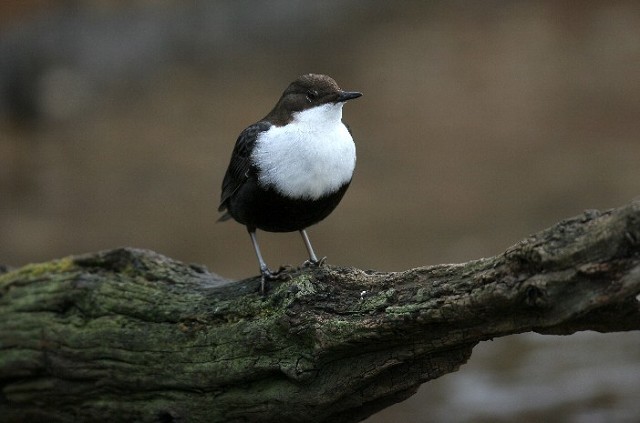
Black-bellied Dipper, Watton, East Yorkshire (Photo: Mark Ranner)

Hoopoe, Llanrwst, Conwy (Photo: Adrian Foster)
The Richard's Pipit at Howden's Pullover (Lincolnshire) was still to be found to 9th at least. Only 23 Waxwings were reported as numbers dwindled yet further. At least seven were in Great Yarmouth cemetery on 8th, 10 were in Glasgow (Clyde) on 10th and six were around Pickering (North Yorkshire) on 11th. Two Dark-breasted Barn Owls remained in place, at the Cotswold Water Park (Wiltshire) on 7th-9th, and at Wacton Common, Long Stratton (Norfolk) to 7th. The Black-bellied Dipper at Watton (East Yorkshire) was still present to 7th. Two Hoopoes were noted this week: one remained at Polgigga (Cornwall) to 6th and another arrived at Llanrwst (Conwy) on 7th, remaining to 10th.

Hume's Leaf Warbler, Stockton-on-Tees, Cleveland (Photo: David Brown)
We are now down to just one Hume's Yellow-browed Warbler this week, the bird at Stockton-on-Tees (Cleveland), the sole species representative, remaining to 9th. Five Yellow-browed Warblers included two birds at Helston (Cornwall) on 7th. Two birds remained in Devon, at Plymouth and Bovey Tracey, while another was still at Jarrow (Co. Durham). A Pallas's Warbler was found at Weymouth on 12th and invited the obvious question as to whether it was the bird from Oakers Wood "coasting" (the bird there was last reported on March 2nd).

Rose-coloured Starling, Haverfordwest, Pembrokeshire (Photo: Richard Stonier)

Great Grey Shrike, Clumber Park, Nottinghamshire (Photo: Mike)
The Chough at Warton Crag (Lancashire) remained to 11th at least, while the Rose-coloured Starling remained at Haverfordwest (Pembrokeshire) to 11th. There were still up to 17 Great Grey Shrikes around the country this week, including up to four birds in Gloucestershire, up to three birds in Powys, including two together at Glasfynydd Forest on 11th (with five birds in the Principality as a whole) and two birds in Nottinghamshire. Finally this week to Cornwall, where news of a Little Bunting at Portscatho eased out on 6th (the bird having been present since 3rd at least). This pretty area of the county is perhaps best known by birders for the remarkable discovery of a wintering Least Sandpiper there in February 1986, but the Bunting can now be added to the rarity roll-call for the site that also includes King Eider and Lesser Grey Shrike. What was presumably the same bird was rediscovered at Porthmellin Head on 12th, making use of the set-aside fields alongside the coastal path.
Photo of the Week

Robin, undisclosed site, Lancashire (Photo: Austin Thomas)
Bird photographers often concentrate on achieving a purely natural image, depicting their subjects much as they would be seen by the naked eye. This includes capturing birds in typical poses and settings under normal daylight conditions. This gives a familiar, comfortable 'look' and faithfully represents our experience of the creatures concerned. It can, however, result in images that lack the visual impact now prevalent in many other branches of photography. With his stunning high-speed capture of an alighting Robin, Austin Thomas has frozen his subject in a dramatic pose far too transient to be appreciated by the human eye. His studio-style lighting and background, coupled with a simple, balanced composition, has also created a striking, graphic image that proves bird photography can be as bold and creative as other forms of the art.
Other notable photos

Common Kingfisher, Turkey (Asian) (Photo: Mehmet Goren)
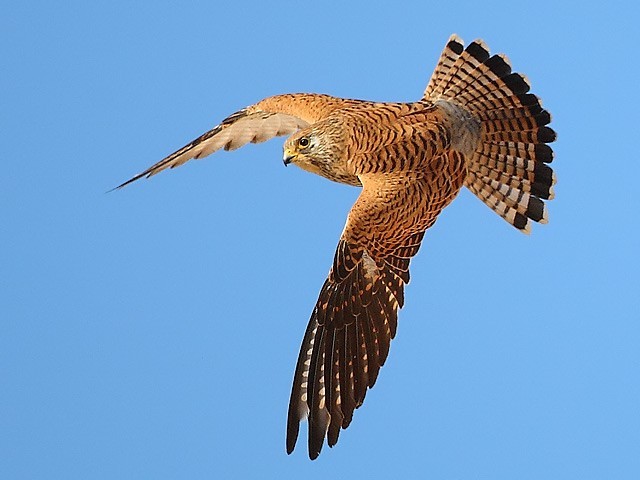
Lesser Kestrel, Spain (Photo: Steve Fletcher)
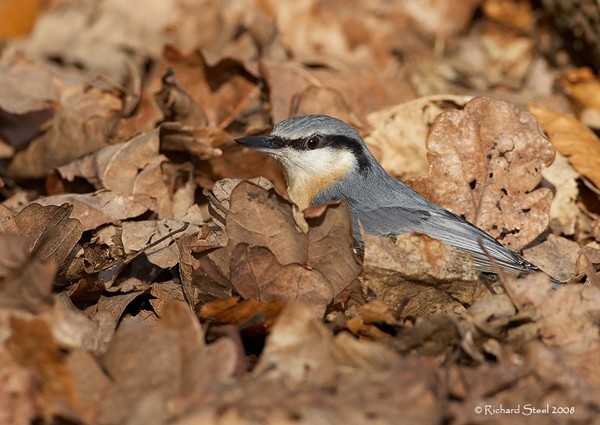
Nuthatch, undisclosed site, Cheshire (Photo: Richard Steel)

Siskin, Whitacre Heath NR, Warwickshire (Photo: Steve Seal)

Common Crossbill, undisclosed site, Ayrshire (Photo: Mark Hope)

Grey Heron, Leighton Moss RSPB, Lancashire (Photo: Tom Charles)
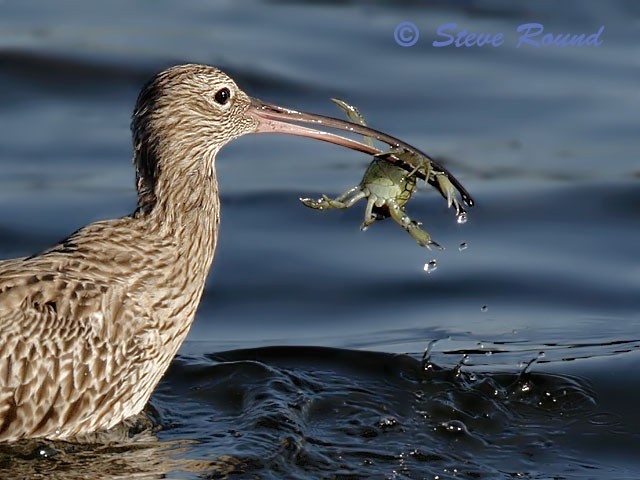
Curlew, Leighton Moss RSPB, Lancashire (Photo: Steve Round)

Little Egret, West Kirby, Cheshire (Photo: Richard Steel)

Short-eared Owl, undisclosed site, Clwyd (Photo: David Cookson)
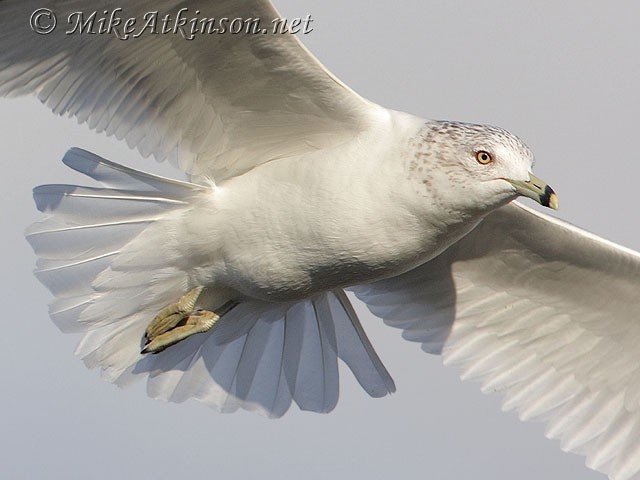
Ring-billed Gull, Beddmanarch Bay, Anglesey (Photo: Mike Atkinson)

Mandarin Duck, Raby Mere, Cheshire (Photo: Philip Price)

Goldfinch, Llandrindod Wells, Powys (Photo: Kev Joynes)

